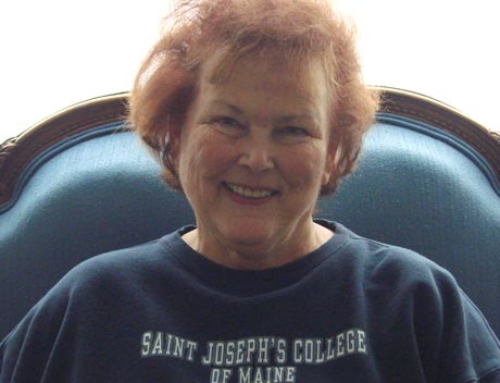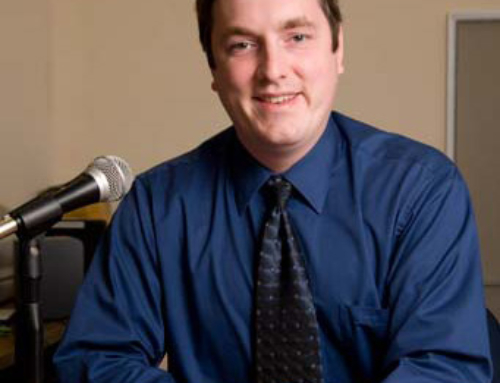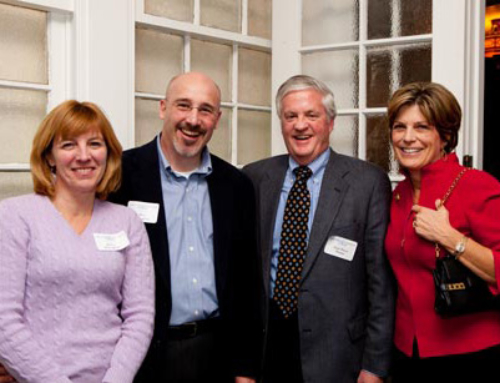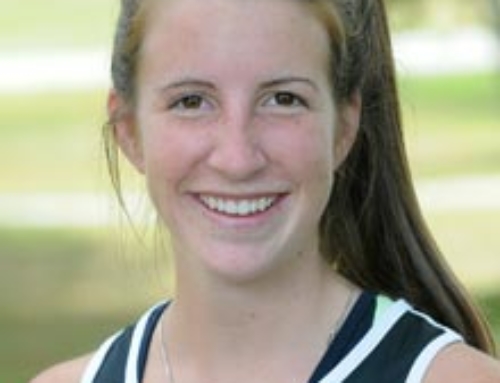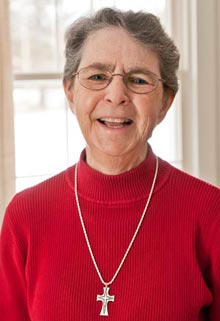 This year Campus Ministry celebrates 20 years of sending students to help others in need – when they could be basking in the Florida sun or enjoying home-cooked meals.
This year Campus Ministry celebrates 20 years of sending students to help others in need – when they could be basking in the Florida sun or enjoying home-cooked meals.
On a late afternoon in March 1992 while driving through the hills of West Virginia, Sister Michele Aronica, RSM, saw a single snowflake drift by the windshield. As she steered the St. Joe’s van with nine students aboard, the snowflake made her think of the road sign not far back. “Expect hazardous weather next 75 miles,” it warned. The van climbed deeper into the hills, and, before long, one snowflake quickly turned into a blinding white-out. Unable to continue, Sister Michele and the driver of another car carrying students pulled over to wait out the storm. A third car in the caravan with Campus Ministry director Sister Sylvia Comer, RSM, had gone on ahead, losing contact with the others when the signal from the walkie talkie faded. Reaching the group’s overnight stop far earlier, Sister Sylvia sat up waiting and praying until 2 a.m., when Sister Michele’s van and the other car finally pulled in. And so it was that St. Joe’s first Spring Break Workfest began with a blizzard.
That first night in West Virginia, the crew of volunteers slept on mats in the local parish hall. They included Board of Trustees member Cynthia Murray Beliveau ’70 and Edna Talbot, mother of one of the students. The next day they all reached tiny McKee, Ky., where they settled into a rustic camp, woke the following morning at 6 a.m., and got to work helping the Christian Appalachian Project (CAP) repair homes in one of the nation’s poorest regions.
“Michele was up on the roof working on the house and would come back covered in black. There was no hot water and sometimes just a trickle of cold. Talk about roughing it,” says Sister Sylvia, laughing.
The following year Sister Michele and Sister Sylvia returned with another group of students who wanted to serve in Kentucky. This time the blizzard hit in Pennsylvania.
For four days the group was stuck in an EconoLodge. Interstate 80 was shut down to all traffic. In such tight quarters, student dynamics were eroding fast, and Sister Sylvia decided to take action.
“I called every church in the area to see if they needed help shoveling out. I called Red Cross. I called Meals on Wheels,” she says.
“They were so grateful for the help … (the students) shoveled snow, they delivered meals,” recalls Sister Sylvia.
The group never did make it to Kentucky that year, but the following year volunteers arrived there easily. Unbelievably, flooding in the area forced them to leave after several days.
From those first three years of weather setbacks and a focus solely on Kentucky, the St. Joe’s Workfest has grown to 40 students at five sites this year, including Philadelphia, New Orleans, Yonkers, N.Y., Bellows Falls, Vt., and Kentucky (where they have gone every year since CAP started the program).
On a typical day at a Workfest site, students are up and out early, putting in a full day to help abused, homeless children with homework; organize clothing donations; serve in food kitchens; clean up building lots; paint rooms at a resource center for homeless teenagers, staff a Habitat for Humanity retail store, insulate and caulk windows, repair sheetrock – or whatever else needs done.
Jim Killoran ’80, who heads up Habitat for Humanity in Westchester County, N.Y., hosts a group of Workfest students from his alma mater every year. He shows them more than how to swing a hammer; he also shows them behind the scenes how building community relations and support is necessary to building community housing.
After putting in a long day, students also reflect on what they do through journaling and daily group sharing. One kind of reflection involves “popcorn prayers,” in which anyone can pop up to express gratitude for something that happened that day.
Not all the participants are religious. Frank Daggett ’80/’08, who coordinates Spring Break Workfest for the Campus Ministry office, says most students who go have a sense of something spiritual in their lives, but might not be able to articulate it. “They’re not necessarily religious, per se. They respond to a situation, but not if we preach.”
Daggett says students are immersed for a week with projects where people are putting their faith into action through compassion. “It may not be a faith-based organization, but once you meet the staffers, they’re usually practicing their faith,” he says.
What’s stressful for students? Dealing with economic extremes can feed a sense of guilt, as students “weigh a family’s income for a month vs. the cost of a pair of Uggs,” Daggett says. “It makes them think about: What do I need to be happy? They might think that people (they serve) are going to be dejected. Turns out they’re happy. It’s a turning point realization.”
Over the last four years, student leadership has played a larger role, and now most Workfest groups serve without a faculty or staff supervisor. Student leaders for each Workfest site train ahead of time in handling contingencies, group dynamics, fundraising and other aspects of the experience – all of which builds self-confidence.
All Workfest participants get trained in sensitivity toward a new culture where people suffer because of poverty, old age or loneliness. They are taught to remember the people they will serve have faces, names and life stories. They learn about empowerment, dignity and the phrase “working with.” They see they can come to help as an equal.
“We are called to bring Christ’s love,” says Daggett simply.
Holly Sanborn, who now works in The Academic Center, was formerly in Campus Ministry and coordinated the weeklong trips as part of her job. She also went along as a staff leader on Workfest for five years, and discovered “how much we learn from those who struggle.” She and the students came away with a clearer understanding of hunger and living on the streets. “It’s eye-opening, pure and simple,” says Sanborn.
Amy Gould Dowler ’02 volunteered all four years with Workfest and now works for Habitat for Humanity in Portland, Maine. She says Workfest builds leaders and “requires you to take yourself beyond the ‘safe’ boundaries of what is comfortable … to places where you see the worst that this world can offer and discover that you have it within yourself to make it better – one person at a time.” She says the Mercy tradition exemplified by the Spring Break Workfest program led her to do the work she does now with Habitat.
For his part, Daggett loves the work. “I enjoy working with student leaders. It’s fun to see how participants get excited about it,” he says. Though a week isn’t enough time to make a huge contribution, some eventually go on to additional service. Kelly Hopkins ’10, for example, decided to become a long-term volunteer at Christian Appalachian Project, while others have joined Mercy Corps or the Jesuit Corps.
Social justice coordinator Daggett says he’s really proud of Saint Joseph’s students’ willingness to serve, and thankful for the legacy handed on from Sister Sylvia, Erin Sweezy, Holly Sanborn and others. “This past week I got a call from a counterpart at an Ivy League school, asking about our student-led service program, and I was amazed at how far ahead of them SJC is,” he says. “Workfest is truly one of the gems of St. Joe’s!”
The first St. Joe’s Workfest came about when a staff member from the Christian Appalachian Project (CAP) rode circuit across the Northeast in the fall of 1991 to sign up college students to volunteer in their new program called Spring Break Workfest. Campus Ministry director Sister Sylvia Comer put up a sign-up sheet, promoted it and got 10 students for the journey to Kentucky.
Rev. Ralph Beiting (Hon.’01) started Christian Appalachian Project in 1964 after he was assigned to pastor a large portion of east-central Kentucky, though the area had no Catholic church. He realized that aside from needing spiritual guidance, the people of Appalachia were in great need of physical support. With the help of family and friends, he brought them provisions, clothing and other goods.
A Roman Catholic priest who was raised in Kentucky, he wanted to help people help themselves out of poverty. “I found myself in Appalachia, pastor of a non-existent church in a parish the size of the state of Rhode Island. I thought to myself, ‘This has got to be some mistake.’ If it was, it was the happiest mistake of my life.”
n 1957, he and his associate pastor pooled their small stipends and bought land to start a summer camp for boys from poor families. Named Cliffview Lodge, it was racially integrated during the days when segregation reigned. The summer camp was a success, and in 1964 Father Beiting named his growing ministry and declared it would be “a group that would roll up our sleeves and get the job done.” The Christian Appalachian Project was born. Now the 15th-largest human services charity in the nation, the nonprofit, interdenominational organization has grown to touch the lives of more than 1 million people each year with a wide range of services that help to change lives, teach skills and improve the community. For more information, go to www.christianapp.org.
